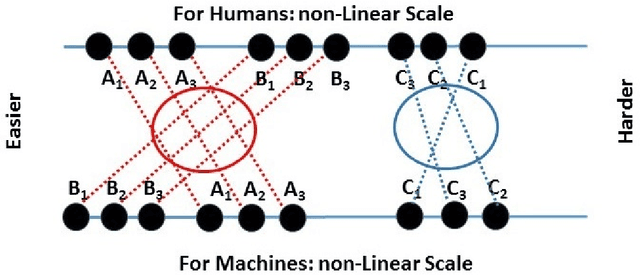Gary Lupyan
Language models align with human judgments on key grammatical constructions
Jan 19, 2024

Abstract:Do Large Language Models (LLMs) make human-like linguistic generalizations? Dentella et al. (2023; "DGL") prompt several LLMs ("Is the following sentence grammatically correct in English?") to elicit grammaticality judgments of 80 English sentences, concluding that LLMs demonstrate a "yes-response bias" and a "failure to distinguish grammatical from ungrammatical sentences". We re-evaluate LLM performance using well-established practices and find that DGL's data in fact provide evidence for just how well LLMs capture human behaviors. Models not only achieve high accuracy overall, but also capture fine-grained variation in human linguistic judgments.
Can We Distinguish Machine Learning from Human Learning?
Oct 08, 2019



Abstract:What makes a task relatively more or less difficult for a machine compared to a human? Much AI/ML research has focused on expanding the range of tasks that machines can do, with a focus on whether machines can beat humans. Allowing for differences in scale, we can seek interesting (anomalous) pairs of tasks T, T'. We define interesting in this way: The "harder to learn" relation is reversed when comparing human intelligence (HI) to AI. While humans seems to be able to understand problems by formulating rules, ML using neural networks does not rely on constructing rules. We discuss a novel approach where the challenge is to "perform well under rules that have been created by human beings." We suggest that this provides a rigorous and precise pathway for understanding the difference between the two kinds of learning. Specifically, we suggest a large and extensible class of learning tasks, formulated as learning under rules. With these tasks, both the AI and HI will be studied with rigor and precision. The immediate goal is to find interesting groundtruth rule pairs. In the long term, the goal will be to understand, in a generalizable way, what distinguishes interesting pairs from ordinary pairs, and to define saliency behind interesting pairs. This may open new ways of thinking about AI, and provide unexpected insights into human learning.
 Add to Chrome
Add to Chrome Add to Firefox
Add to Firefox Add to Edge
Add to Edge